In February of 1968, 12 Soviet-made PT-76 tanks supported by more than three battalions of North Vietnamese Army (NVA) infantry assaulted a United States Special Forces Camp near Khe Sanh. It was the first time that the NVA had used tanks against American or South Vietnamese positions in the war, and the defenders were ill-prepared for the circumstances.
Eight Green Berets and several South Vietnamese and indigenous soldiers were trapped in the base’s command bunker where they were subjected to grenade, tear gas, and high explosive attacks for a day while awaiting rescue.
U.S. Special Forces were deployed in the 1960’s to the northwest corner of South Vietnam near the Laotian border and just south of the demilitarized zone that separated North and South Vietnam. The Green Berets assigned to the area operated out of the Lang Vei operating base, training Montagnards and other minority groups in South Vietnam known as CIDG’s (Civilian Irregular Defense Groups).
In late 1967, the U.S. forces began constructing a new operations center about half a mile away on top of a hill, and the former base became known as “old Lang Vei.”
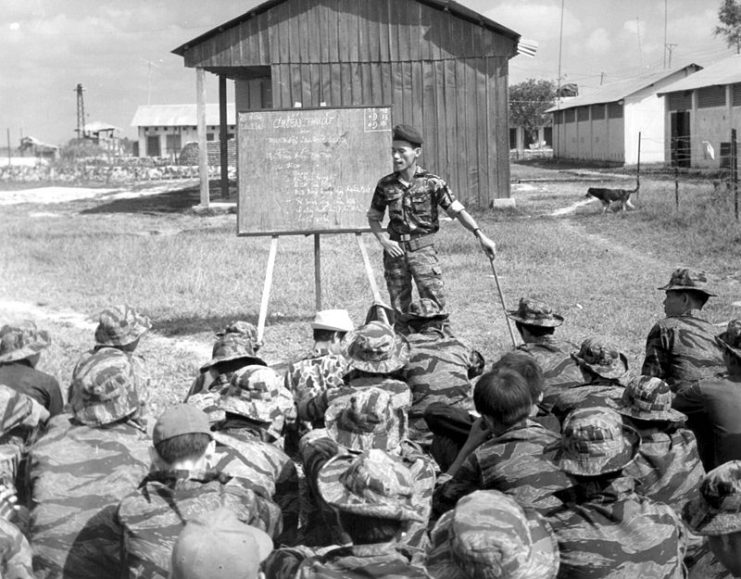
Lang Vei relied on artillery and air support from U.S. Marines at the Khe Sanh base located only 6 miles to the east and from three nearby hilltops, 861, 831N and 831S, that were also occupied by U.S. Marines.
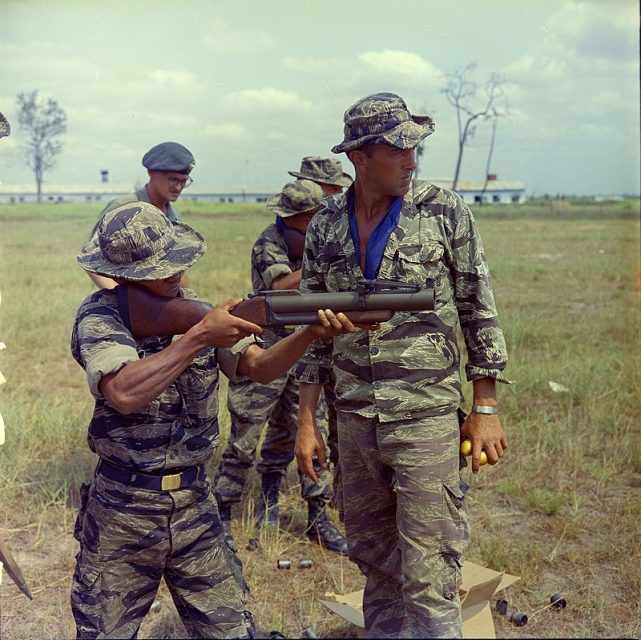
Making matters worse were signs of Soviet armor that were being reported from various sources including North Vietnamese defectors. However, these reports were largely discounted by commanders as being unlikely due to the lack of good roads and because the NVA had never used armor in previous engagements.
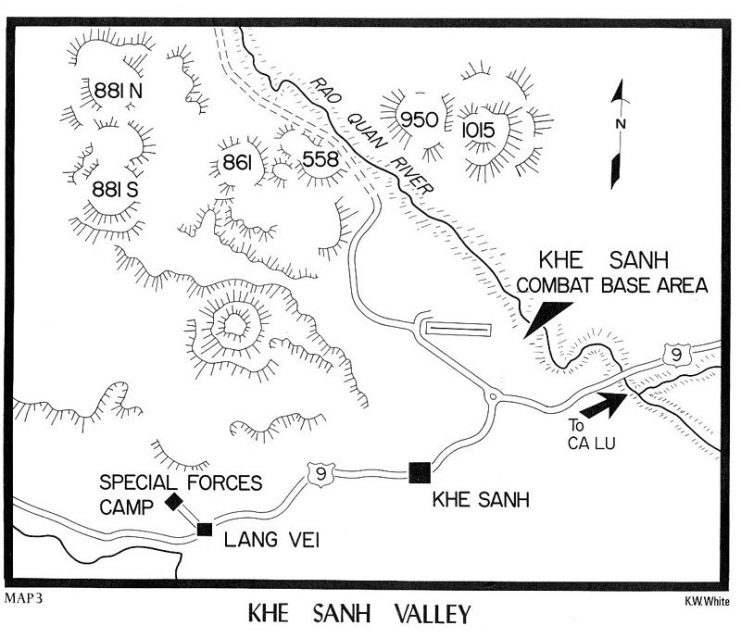
The BV33 battalion at the outpost was routed and fled east toward old Lang Vei with their families. Roughly 8,000 civilians in the area fled with them. Medical supplies, food, and other items were then airlifted to old Lang Vei.
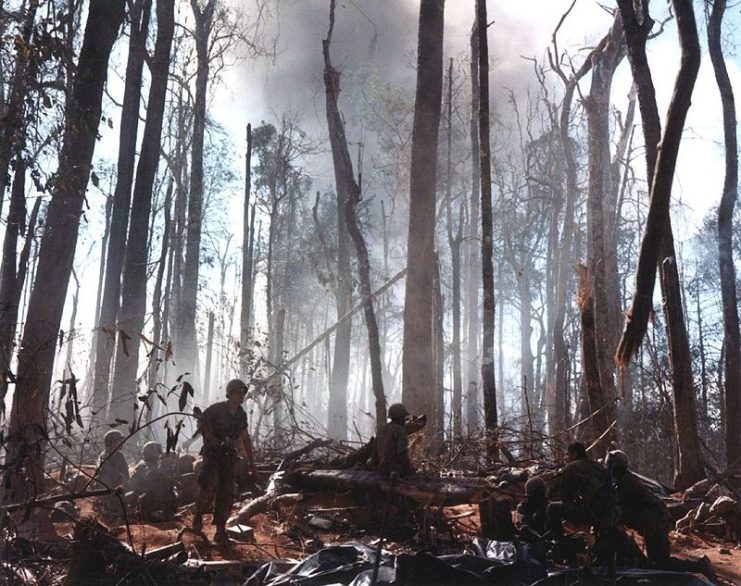
Nonetheless, the Green Berets were supplemented with 100 M72 light anti-tank weapon (LAW) rockets delivered to Lang Vei in early February. The camp also had use of two 106mm and four 57mm Recoilless Rifles, but had little anti-tank (AT) ammunition. They also lacked any anti-tank mines.
Additionally, the camp was reinforced with a Mobile Strike Force (MIKE) of indigenous troops, bringing the total soldiers at Lang Vei to over 500.
On the afternoon of February 6th, the NVA began bombarding Lang Vei with mortars and 152mm howitzers.
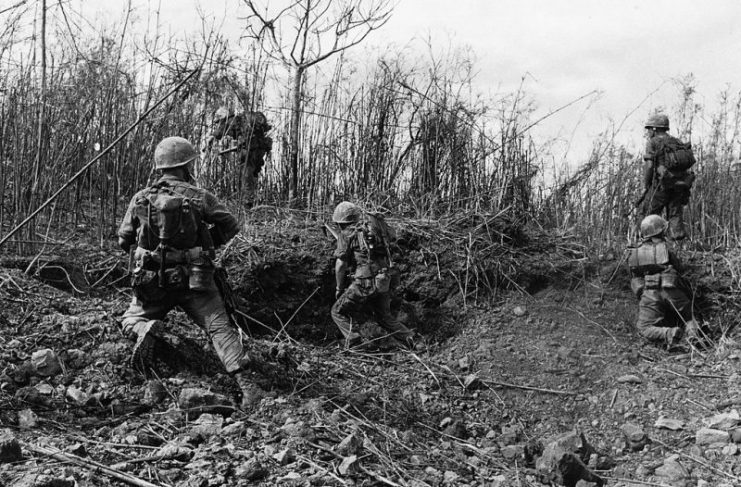
Captain Willoughby, who was in command of the defenders, called in air support from a AC-119 Shadow gunship and other air strikes on the approaches to the base. Artillery from U.S. Marines also targeted these ravines, but the NVA broke through the perimeter too quickly
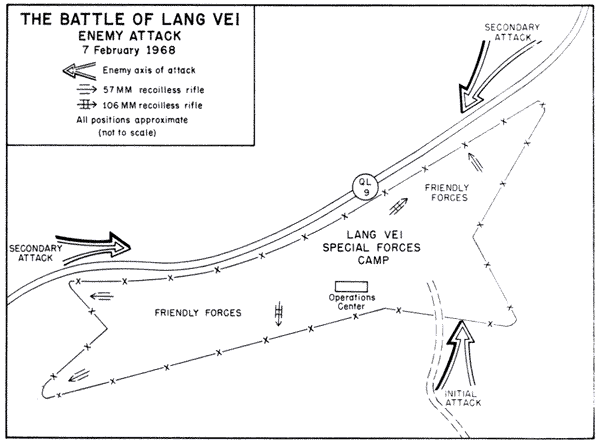
The defenders were overrun by the NVA assault in only 13 minutes of fighting. Many of the surviving Green Berets fell back to the Tactical Operations Command (TOC) bunker. Willoughby requested Marine reinforcement from Khe Sanh, but was denied.
Others formed anti-tank squads using the LAWs to try and destroy the NVA armor. Unfortunately, the LAWs often malfunctioned or misfired. Even direct hits on the Soviet-made tanks merely bounced off the armor without detonating, but at least one additional tank was destroyed through their efforts.
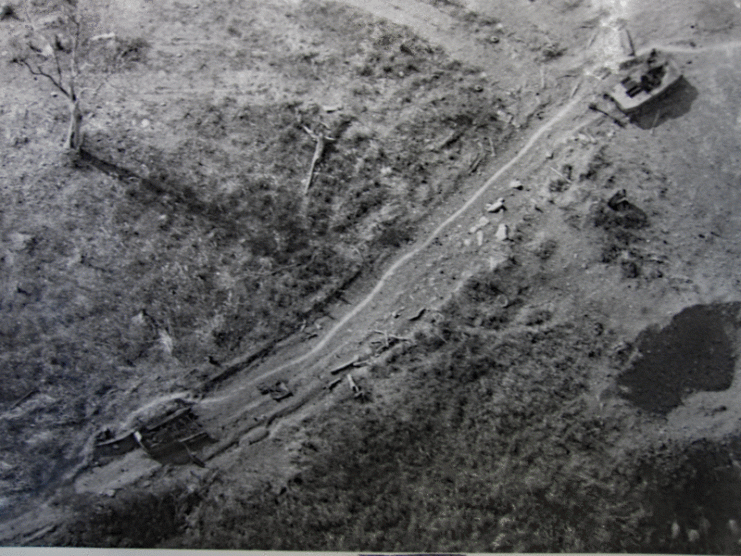
Four Green Berets and a group 50 CIDG troops found themselves isolated from the TOC, which was under bombardment from the NVA tanks. These troops attempted to extricate themselves from the base and move to old Lang Vei to get help.
As they made their way out of the camp, they became engaged with a sizable number of NVA troops. Only two of the Americans and ten Vietnamese made it the half-mile to old Lang Vei.
At the TOC, eight Green Berets and nearly 30 South Vietnamese or CIDG troops had taken refuge in the large steel-reinforced concrete bunker. Its entrance was destroyed by the blast of one the 76mm tank guns, leaving only a narrow gap to enter or leave.
Over the next eight hours, the NVA would use a multitude of weapons in their attempt to smoke out or kill the survivors in the TOC, with little or no success.
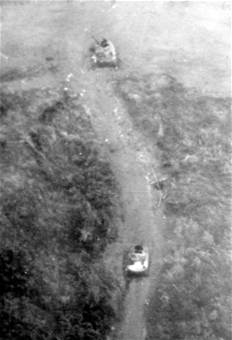
Next, the NVA threw thermite grenades and tear gas into the bunker. These caused some minor injuries and confusion, but the Americans had been trained well and been exposed to tear gas before, so the group endured.
However, the Vietnamese and CIDG soldiers succumbed to the pressure and were coaxed out of the bunker by NVA soldiers. They decided to leave their arms and climb the stairs out of the bunker to surrender. The NVA executed all of them.
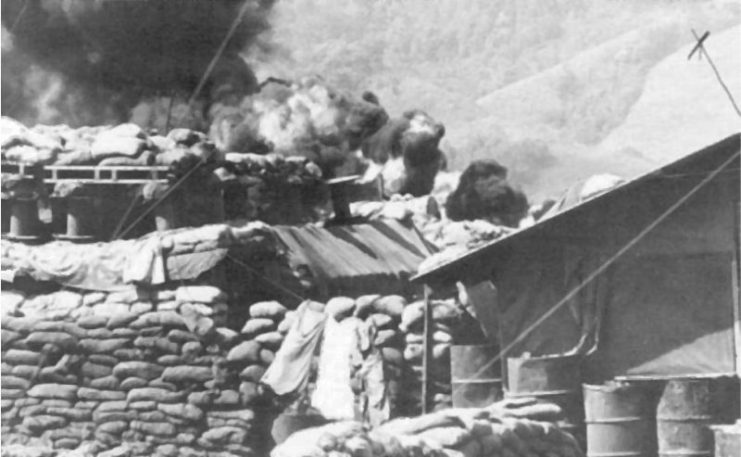
And yet, the soldiers stood their ground and refused to surrender through the night, hoping that reinforcements would arrive and air attacks would resume on the NVA with daylight.
Meanwhile, one U.S. soldier at old Lang Vei organized several dozen Laotian soldiers to assist him in attacking the NVA at the base. Sergeant Eugene Ashley led several assaults on the base camp to relieve his stranded comrades at daylight.
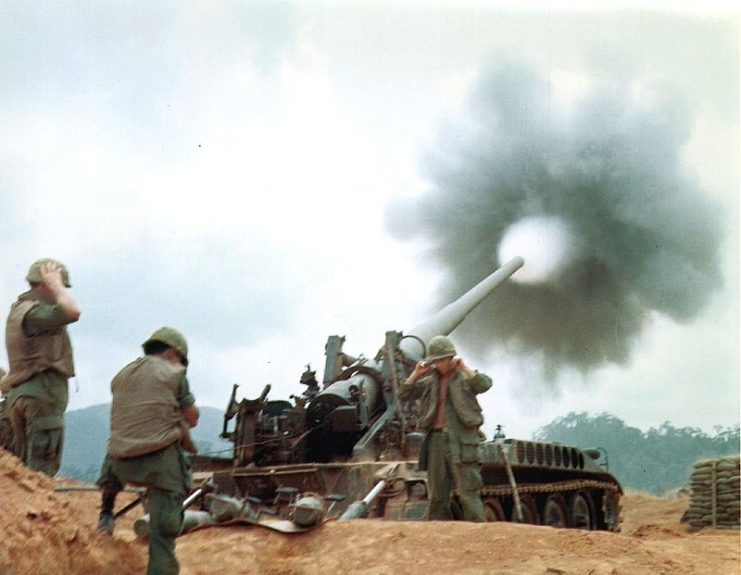
Each attempt was thrown back by the NVA, and the soldiers of BV33 became more and more hesitant to advance towards the base. On his third attempt to reach the base, Ashley was shot in the chest and later died from an artillery blast.
The NVA made one more attempt to oust the remaining eight Americans from the TOC by placing several bricks of C-4 in the ventilation shaft and detonating it. The resulting explosion was enormous, but failed to kill any of the soldiers.
Instead, it opened a hole in one of the walls that allowed the trapped soldiers to use a remaining radio to contact a forward air controller flying nearby.
Expecting another assault by the NVA on the TOC at any moment, the trapped soldiers called in airstrikes and planned to make a breakout.
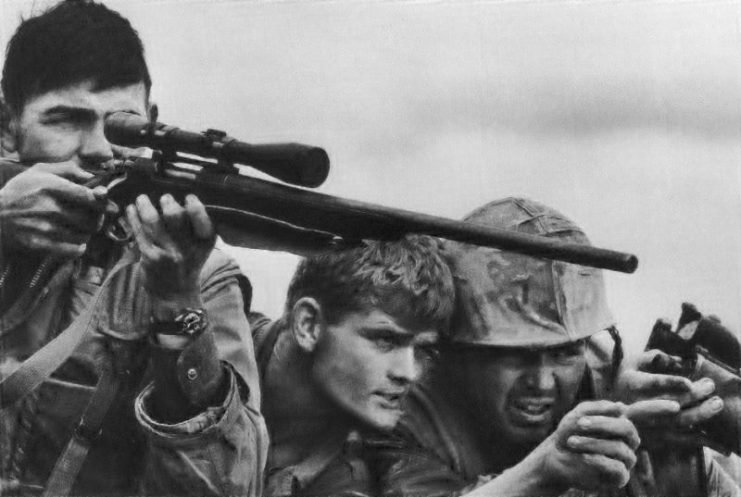
The remnants of the TOC met the remaining Americans and were soon all evacuated by helicopter. The CIDG and BV33 soldiers and their civilian followers were forced to elude the NVA and travel to the Khe Sanh base on foot.
Of the 24 American Special Forces soldiers, 7 were killed, 11 wounded, and 3 were captured. Sergeant Ashley was posthumously awarded the Medal of Honor for his efforts and sacrifice to save his fellow soldiers.
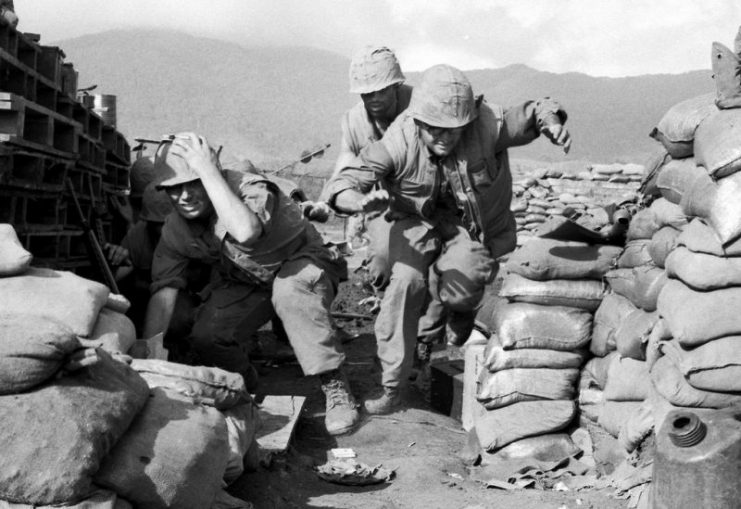
The official NVA report listed 90 KIA and 220 wounded, with 7 of their 12 tanks as destroyed or damaged. Although Lang Vei was lost, Khe Sanh withstood the NVA assaults.
TET Offensive attacks were rolled back and defeated throughout South Vietnam in short order, including Hue and the brief breach of the U.S. embassy in Saigon, despite the mischaracterization by the media at the time.


Nice research. Thanks for the post!
ReplyDeleteHey Old NFO;
DeleteYou are welcome, this one was kinda fun.